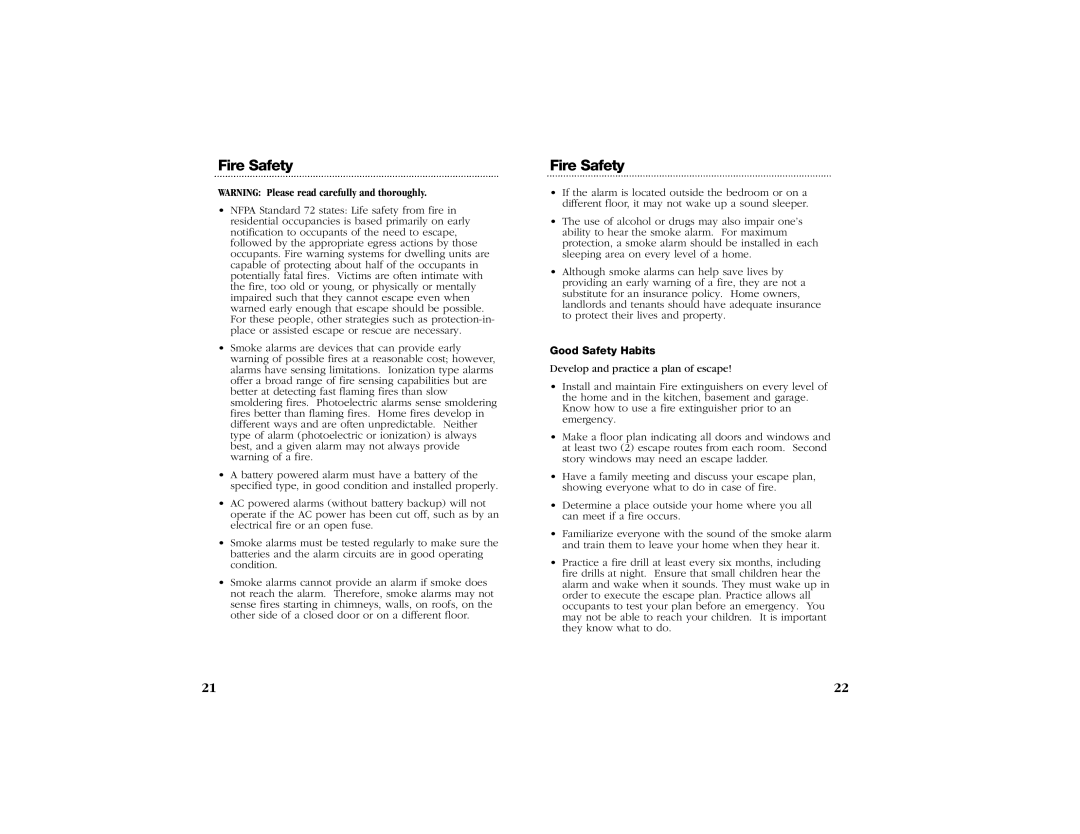1276CA specifications
The Kidde 1276CA is a highly regarded smoke and carbon monoxide (CO) detector designed to enhance safety and provide peace of mind for your home. This advanced device combines state-of-the-art technology with user-friendly features, making it an essential addition to any household.One of the standout features of the Kidde 1276CA is its dual-sensor technology. This model incorporates both ionization and photoelectric sensing technologies, enabling it to detect a wide range of fire types effectively. Ionization sensors are particularly responsive to flaming fires, while photoelectric sensors excel in detecting smoldering fires. The combination of these two sensing methods allows for faster response times and increased reliability in various fire scenarios.
The Kidde 1276CA is also equipped with a sealed lithium battery, which boasts a lifespan of up to 10 years. This eliminates the need for frequent battery replacements, providing both convenience and consistent performance over an extended period. The sealed battery design ensures that users never have to worry about battery maintenance, as the unit will inform you when the end of its operational life is approaching.
In addition to its smoke detection capabilities, the Kidde 1276CA features an integrated carbon monoxide sensor. Carbon monoxide is a silent and deadly gas that can result from malfunctioning appliances or improper ventilation. This detector can sense dangerous levels of CO and alert occupants with a loud alarm, safeguarding families from potential poisoning.
Furthermore, the Kidde 1276CA comes with a convenient test and reset button, allowing users to regularly check the unit's functionality easily. The easy-to-read LED indicators provide visual confirmation of the unit's operational status, while a low battery warning and end-of-life reminder ensure that users stay informed about their detector's condition.
Installation is straightforward, as the Kidde 1276CA can be mounted on walls or ceilings. Its compact and modern design blends seamlessly with any home decor. With an emphasis on user safety, this device meets all the necessary regulatory standards and certifications, making it a reliable choice for residential fire safety.
In conclusion, the Kidde 1276CA is a comprehensive smoke and carbon monoxide detector that combines advanced sensing technology, user-friendly features, and reliable performance. It offers peace of mind to families by effectively detecting potential hazards, simplifying maintenance, and ensuring comprehensive protection against both smoke and carbon monoxide risks. Investing in the Kidde 1276CA is a proactive step towards a safer living environment.
